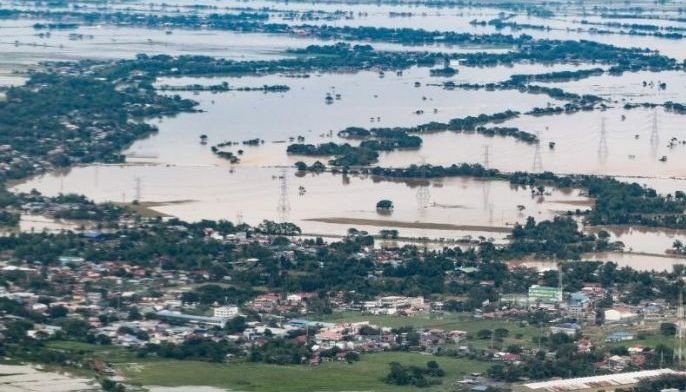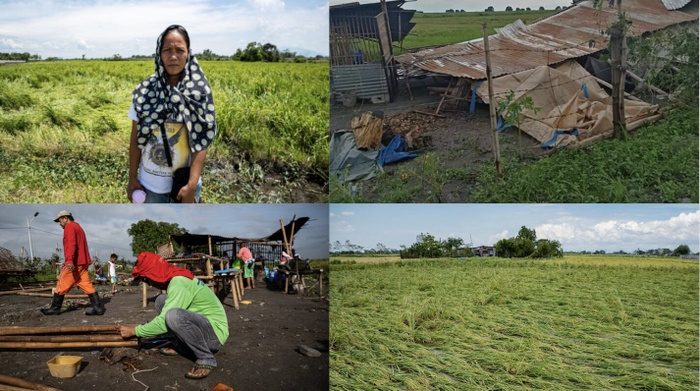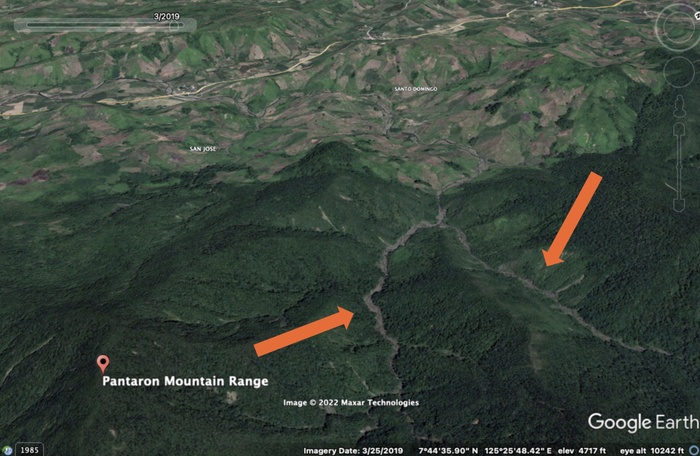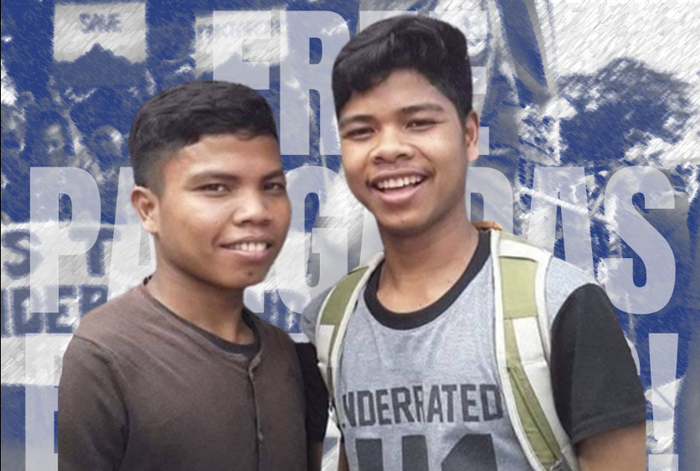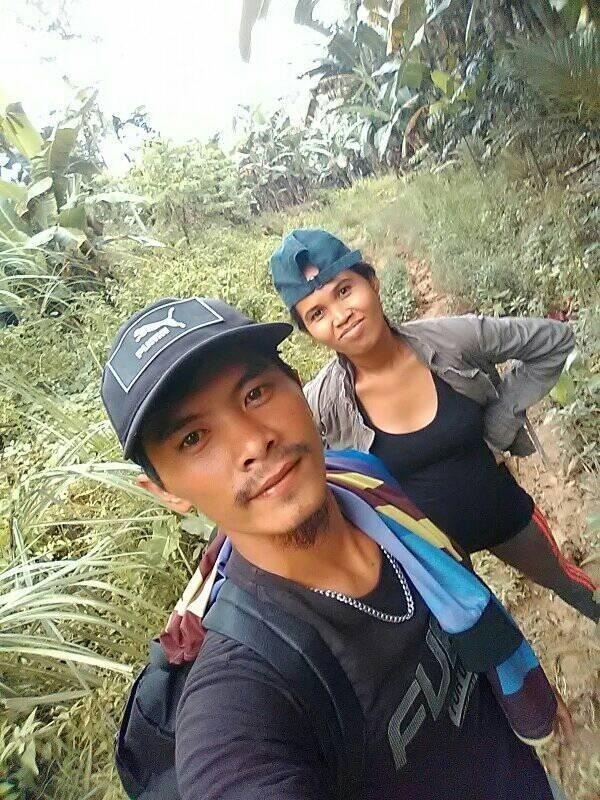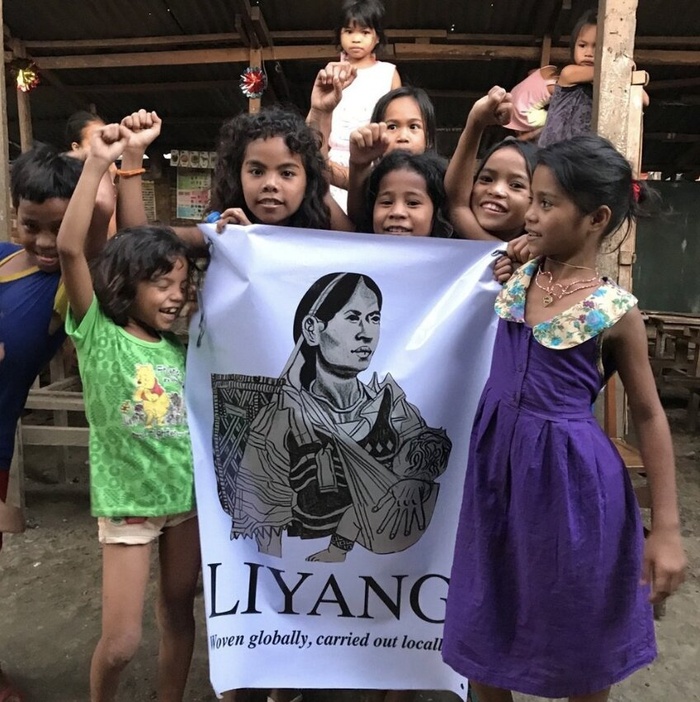As the state of climate crisis heightens, join Liyang Network in answering the urgent call to sustain frontline communities and protect environmental defenders in the Philippines.
People often talk about climate change as if it were a problem for future generations. The reality is, the climate catastrophe is happening NOW, and requires urgent action from all of us.
This November, world leaders, corporate actors, and civil society organizations gathered at the COP 27 Climate Summit to discuss the issue of climate change. Among the conference attendees, the powerful and well-funded were the most represented. Meanwhile, absent from these conversations were the many frontline environmental defenders of the world whose grassroots struggles are often the first and last line of defense in the protection of the world’s forests, rivers, mountains, and arable lands.
Support the struggle to defend land and life in the Philippines: give the gift of solidarity!
Are you thinking about holiday season gifts? Donate to our campaign on behalf of a friend, family member, or loved one and we’ll send them digital content and information on the impact of your gift for typhoon-impacted communities and environmental defenders targeted by state forces.
How to send a gift: Check the “Dedicate my Donation” option when you donate.
What does the campaign support?
As the state of climate crisis heightens, our campaign will support environmental defenders at the frontlines of environmental defense and communities impacted by the catastrophic effects of super-charged storms.
Our campaign will help bring relief and rehabilitation to Central Luzon and Mindanao through partnerships with local grassroots organizations Central Luzon Disaster Response Network and Lingkod Katribu, respectively. These regions were among the hardest hit during the typhoon season of 2022 by Super Typhoon Noru (Karding) and Typhoon Nalgae (Paeng).
Our campaign will also support the legal needs of four arrested environmental defenders, the Pangadas brothers and the Diagone couple. Ismael (22) and Mawing (19) Pangadas are two red-tagged Lumad youth who remain in detention months after being arrested on false charges in July. Lerma Lawian-Diagone (26) and Jeffrey Diagone (28), two Lumad school teachers from the B'laan tribe who were arrested on false charges in Davao del Sur in September.
The situation of Climate Change in the Philippines
Although the impacts of our warming climate are felt around the world, they are not felt equally. Many of the most impacted countries are among the poorest and least responsible for the climate catastrophe. The Philippines is responsible for only 0.2% of global historic emissions, while over 50% of historic emissions have been produced by major industrial or developed countries including the United States, European Union countries, United Kingdom, Japan, and Canada. Because of their historically heavy industrial activity, the Philippines now suffers from changing climate patterns and climate calamities such as storms, floods, and drought. In 2021, the Philippines was one of the top countries most affected by extreme weather, and in 2022 alone, 17 typhoons have struck the Philippines, with more expected before the end of the year.
The situation of Environmental Defenders in the Philippines
Frontline environmental defenders in the Philippines are some of the most targeted and criminalized land and environmental defenders in the world for their efforts to stand against development aggression and unsustainable resource extraction. In 2021, the country was considered among the top 5 deadliest for environmental defenders in the world. Despite the danger and repression, grassroots organizations of Indigenous peoples, peasant communities and coastal communities continue to fight for a better world for all of us.
What is the impact of your donation?
By donating to our Climate Justice Winter Giving campaign, you support the needs of environmental defenders and communities most impacted by climate change. The following are examples of how far your donation can reach in the Philippines!
$10 can pay for a typhoon-relief survival pack for a family
$50 can support the daily needs of an arrested individual for a week
$100 can support the legal needs of an arrested individual for a month
$200 can support the legal needs of two arrested individuals for a month, or the daily needs of one arrested individual for a month
$700 can support the daily needs of all four political prisoners for a month
$1,200 can support the installation of a generator and solar lighting in a typhoon hit community
What are the impacts of Super-Typhoon Noru (Karding), Typhoon Nalgae (Paeng), and yearly typhoons?
This year alone, the Philippines has been hit by 17 typhoons, including the two most recent ones Noru and Nalgae. Although highly destructive super-typhoons have now become an annual occurrence, neither disaster relief nor loss and damage support in the wake of these storms is prioritized by the Philippine government or international agencies.
Typhoon Noru, locally known as Super-Typhoon Karding, made landfall on the Philippines on September 26, 2022 with wind speeds of 110 mph. These high winds tore through Central Luzon, leading to an estimated minimum $2.4M in crop damage and losses in the mostly agricultural region of the country according to Central Luzon Disaster Response Network. Farmers were completely without power for weeks, and many lost both homes and crops in the disaster and are a long ways from completely recovering.
Aerial view of a flooded area in Central Luzon, Philippines in the aftermath of Typhoon Karding on September 26th, 2022.
According to the Philippine Statistics Authority, from 2000 to 2019, the agricultural sector of the country suffered 63 percent of the damage caused by extreme weather events. Government assistance is inadequate or lacking, and poor landless farmers are forced to shoulder even more debt to have any hope of recovering in the aftermath of these storms.
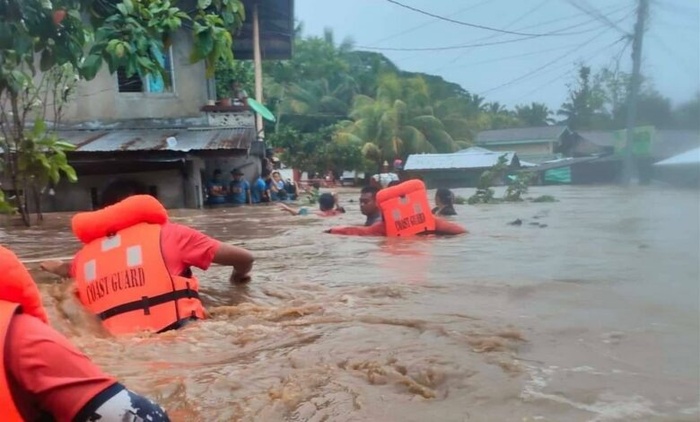
Typhoon Nalgae, locally known as Typhoon Paeng, hit the Philippines at the end of October 2022. The storm brought torrential rains and sustained winds up to 59 mph, ravaging the archipelago as it made multiple landfalls last over the weekend. The typhoon plowed through the country from south to north, dumping rains in the southern and middle regions of Mindanao and Visayas, before making landfall in Luzon in the North. In some riverside barangays, water levels from the flooding submerged entire houses up to the rooftop. The National Disaster Risk Reduction & Management Council has reported around 4 million affected individuals and P2.44 billion ($42.5 million USD) in livelihood damage, with 156 reported dead and 37 missing. Local government units are still struggling to deploy help as the President has yet to announce any concrete relief & recovery plans.
Collage of photos from Hacienda Tinang in Central Luzon. From left to right: a peasant farmer at Hacienda Tinang, the aftermath of Typhoon Karding at Tinang, peasant farmers working on the reconstruction of their Kubol (gathering space), and crops at Tinang blown over after Typhoon Karding in September and October 2022.
The rise in global temperatures in the last century has led to stronger, more frequent and more devastating typhoons at a pace that’s accelerating every year. As the sea surface temperature continues to rise, storms gather more water vapor and heat leading to faster wind, heavier rainfall, and increased flooding when they make landfall. These typhoons also have more of a devastating impact on rural communities every year, leading to massive landslides as whole swathes of the mountains lose more and more of their forest cover to make way for plantation agriculture and open-pit mining. It takes years for the millions of Filipinos, from mostly agrarian communities, to recover from the devastation to their homes and crop-based livelihoods.
Why is it critical to support environmental defenders under threat in the Philippines?
Global climate disaster and local environmental devastation are inextricably linked. Supporting frontline environmental defenders who are putting their lives on the line to halt the destruction of our ecosystems is a crucial step towards climate justice.
According to a report released September 2021 by Global Witness, the Philippines continues to be one of the top 5 deadliest countries in the world for land and environmental defenders, with one of the highest per capita murder rates for frontline defenders. Those who continue to fight against environmental plunder are constant targets of state surveillance, trumped-up charges, bogus arrest, and extrajudicial violence.
Globally, Indigenous peoples steward 80% of biodiversity on the planet, despite making up 5% of the population. This holds true in the Philippines, where many of the defenders most targeted are active in the Lumad Indigenous struggle for self-determination and for the defense of their ancestral lands in Pantaron Mountain Range, a key backbone for biodiversity on the island and one of the country’s biggest and last remaining old growth rainforests. Since the 1990s, Lumad peoples have been active in national and international forums, defending their land through large mobilizations as well as powerful grassroots initiatives around education, art, media and more.
Satellite photo of the Pantaron Mountain Range and San Jose in Mindanao, where the legacy of Indigenous land defense is clearly visible in the dense forest atop the Pantaron compared to the parceled land of San Jose.
These Lumad environmental defenders are standing between extractive industries and vital old-growth rainforests, major river systems, and other life-giving ecosystems in the southern Philippines. Threats against them and other Indigenous activists and environmental defenders have only ramped up since the inauguration of BongBong Marcos, son of the infamous former dictator Ferdinand Marcos. His administration has continued to unleash military harassment of Lumad communities and sanctuaries, raids and forced closure of Lumad schools, criminalization and targeting of Lumad school teachers, and massacres of Indigenous peoples.
Photo collage of brothers Ismael (left) and Mawing (right) Pangadas from the twitter account @freelumadroxas2.
The Pangadas Brothers, 22-year-old Ismael and 19-year-old Mawing, are Talaingod-Manobo students who had to seek sanctuary in 2021 when they learned of a trumped-up charge filed against them. They were lifelong students of Lumad community schools, but had to stop schooling shortly before they could graduate due to the state repression they were facing. In the following year, they continued to be targeted for their work to protect their ancestral lands in Pantaron from destruction by large mining, logging and agri-business corporations.
After months in sanctuary in Manila, they returned to Mindanao this past July, where they were arrested on trumped-up charges of human trafficking. They’ve been held in various jails in the months since, requiring jail support from family and supporters to meet even their most basic daily needs like food, water, and soap.
Lumad school teachers Jeffrey (left) and Lerma (right) Diangone on a hike in Mindanao, Philippines.
The Diagone Couple, 26-year-old Lerma Lawian-Diagone and 28-year-old Jeffrey Diagone, are both B'laan and Lumad school teachers. On September 6, 2022, Lerma and Jeffrey were intimidated by soldiers from 39th Infantry Battalion to submit themselves to the police for arrest under false and trumped-up charges. Lerma brought her 9-month-old son with her as the 39th IB escorted them to the Matanao Police Station. The incident of their arrest indicates the role of armed state forces in the repression of environmental defenders. The B'laan are one of ethnolinguistic tribes that comprise the Lumad (indigenous) people of Mindanao, who have been protectors and defenders of their ancestral lands for centuries. Most recently, the proposed Tampakan copper-gold mining project to tap the largest untapped copper-gold reserve in the Philippines has threatened to displace 4,000 B'laan from their ancestral lands, and several B'laan leaders and individuals have been assassinated for their resistance to the project. However, the strength of the people’s united resistance to the project resulted in the cancellation of the mining project in September 2022– a major victory. As Lumad school teachers, Lerma and Jeffrey sought to educate Lumad youth about the importance of environmental defense. Today, Lerma and Jeffrey require jail support and legal support as they fight their case.
Despite the violence against them, environmental defenders throughout the Philippines continue to resist. The Pangadas brothers and Diagone couple are no exception. They continue to champion environmental defense and human rights even from jail as they battle the state’s bogus charges against them. In the face of increasing state repression and climate catastrophe, supporting those on the frontlines of these decades-long struggles is crucial in building a climate justice movement with a fighting chance of preventing further environmental destruction and safeguarding a livable future for all of us.
Who is Liyang Network?
Liyang is a local-to-global advocacy network that amplifies and supports the struggles of environmental and human rights defenders in the Philippines. We were founded in 2019 in a Lumad evacuation center in Mindanao, at the request of our primary community partner Sabokahan Unity of Lumad Women, to bring together their allies within the Philippines and internationally. We are based in the Philippines and have an overseas chapter in the US, as well as supporters and allies all around the world.
A key part of Liyang’s vision is that we act with the understanding that all struggles for environmental protection are interconnected, and that global movements for the defense of land and self-determination can draw inspiration from those in the Philippines.
Children at UCCP Haran, a former Lumad evacuation center in Davao City, Mindanao, holding up a Liyang Network banner in 2019.
Where can I learn more?
You can find more information about the work Liyang does on our website, https://www.liyangnetwork.org/, and by signing up for our newsletter at tinyurl.com/LiyangNewsletter. You can also find us on Instagram, https://www.instagram.com/liyang_network/, and Facebook, https://www.facebook.com/LiyangNetwork.
If you’d like to get in touch with us, please email us at liyang.network@gmail.com!
Liyang Network Infographic on the COP 27 Climate Summit: https://www.instagram.com/p/Ckza5Ypucd0/
Global witness article on the past decade of violence against environmental defenders: https://www.globalwitness.org/en/press-releases/deadly-decade-land-and-environmental-activists-killing-every-two-days/
Global witness article on the past decade of environmental activism: https://www.globalwitness.org/en/campaigns/environmental-activists/decade-defiance/
Global witness 2021 report: https://www.globalwitness.org/en/about-us/annual-report-2021-our-case-change/
Philippines Country Climate and Development Report: https://openknowledge.worldbank.org/handle/10986/38280
Article on a recent environmental win to prevent the reopening of an open pit mine in Tampakan, Philippines: https://www.mining.com/philippine-town-revokes-permit-for-tampakan-copper-gold-project/
Article on the murder of an anti-mining activist and his son: https://www.bulatlat.com/2013/08/27/groups-bewail-killing-of-another-anti-smi-xstrata-mining-leader-son/

